-
 Bitcoin
Bitcoin $85,166.5048
-4.17% -
 Ethereum
Ethereum $2,332.3388
-6.33% -
 Tether USDt
Tether USDt $0.9989
0.02% -
 XRP
XRP $2.2008
-4.96% -
 BNB
BNB $612.8069
-2.79% -
 Solana
Solana $138.5410
-3.40% -
 USDC
USDC $0.9999
-0.01% -
 Dogecoin
Dogecoin $0.2060
-2.85% -
 Cardano
Cardano $0.6568
-4.98% -
 TRON
TRON $0.2273
-1.24% -
 Chainlink
Chainlink $15.2861
-0.82% -
 Litecoin
Litecoin $124.0095
4.00% -
 Avalanche
Avalanche $22.3040
0.42% -
 Sui
Sui $2.8958
-5.19% -
 Stellar
Stellar $0.2881
-3.07% -
 Toncoin
Toncoin $3.4924
-3.11% -
 Shiba Inu
Shiba Inu $0.0...01443
0.80% -
 UNUS SED LEO
UNUS SED LEO $9.0583
0.31% -
 Hedera
Hedera $0.1989
0.13% -
 Polkadot
Polkadot $4.8364
2.54% -
 MANTRA
MANTRA $7.2534
-5.33% -
 Hyperliquid
Hyperliquid $20.1699
-2.80% -
 Ethena USDe
Ethena USDe $0.9989
0.00% -
 Bitcoin Cash
Bitcoin Cash $295.3498
-0.39% -
 Dai
Dai $0.9999
0.02% -
 Uniswap
Uniswap $8.0171
-4.71% -
 Bitget Token
Bitget Token $3.9422
-10.48% -
 Monero
Monero $215.5398
-0.94% -
 NEAR Protocol
NEAR Protocol $3.0665
0.34% -
 Aptos
Aptos $6.1260
9.34%
How does ZetaChain (ZETA) Coin handle inflation?
ZetaChain's Adaptive Inflation Mechanism (AIM) employs dynamic adjustments and market monitoring to ensure a stable and balanced supply of ZETA tokens, mitigating inflation and supporting network sustainability.
Dec 20, 2024 at 12:46 pm
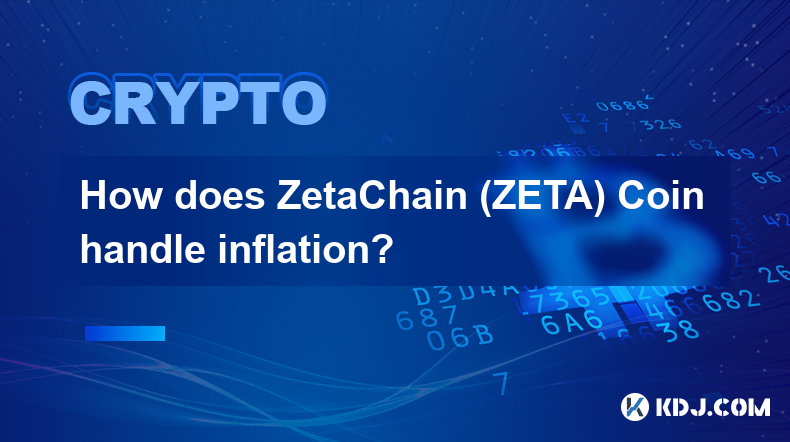
Key Points
- ZetaChain employs a unique monetary policy called the Adaptive Inflation Mechanism (AIM) to control inflation.
- Any net minting fees collected are used to buy back and burn ZETA tokens, effectively mitigating inflation.
- AIM adjusts the inflation rate based on real-time network usage and market conditions, ensuring a stable and balanced supply.
- ZETA is the native token of the ZetaChain blockchain, primarily used for gas fees, staking, and governance.
ZetaChain's Adaptive Inflation Mechanism (AIM)
Net Minting Fee Buyback:
- ZetaChain incentivizes block validators to create blocks by distributing newly minted ZETA tokens as a reward.
- Any surplus net minting fees collected after paying these rewards are automatically used to purchase ZETA tokens from the open market.
- Purchased tokens are then permanently burned, reducing the total supply of ZETA and mitigating inflation.
Variable Inflation Rate:
- AIM dynamically adjusts the inflation rate based on network usage.
- When network activity is low, the inflation rate decreases to ensure a stable price.
- Conversely, when network usage increases, the inflation rate increases to accommodate additional transaction demand.
Real-Time Market Monitoring:
- AIM continuously monitors market conditions and adjusts the inflation rate accordingly.
- If the price of ZETA is falling significantly, AIM increases the inflation rate to increase token supply and support the price.
- Conversely, if the price is rising rapidly, AIM reduces the inflation rate to prevent oversupply and maintain price stability.
Role of ZETA Token in ZetaChain's Ecosystem
Gas Fees:
- ZETA is the primary token used to cover transaction fees (gas) on the ZetaChain network.
- Gas fees are distributed among validators as a reward for processing transactions, further incentivizing network participation.
Staking:
- ZETA holders can stake their tokens to earn rewards and support the network's security.
- Staked ZETA is used to validate new blocks and enforce consensus, ensuring the reliability and immutability of the blockchain.
Governance:
- ZETA is a governance token that grants holders voting rights on proposals related to network upgrades, parameter adjustments, and the direction of the project.
- Token holders have a direct say in shaping the future of the ZetaChain ecosystem and ensuring its alignment with community values.
FAQs
What is ZetaChain's current inflation rate?
- The inflation rate is dynamic and adjusts in real-time based on network usage and market conditions. You can monitor the current inflation rate on ZetaChain's official website or through third-party analytics platforms.
How often is the inflation rate adjusted?
- The inflation rate is continuously monitored and adjusted as needed. The adjustment frequency can vary depending on network activity and market volatility.
Can ZETA's inflation be completely eliminated?
- While the Adaptive Inflation Mechanism (AIM) aims to minimize inflation, it is unlikely to completely eliminate it. A certain level of inflation is necessary to incentivize network participation and ensure the long-term growth of the ecosystem.
What are the benefits of the Adaptive Inflation Mechanism (AIM)?
- AIM helps stabilize the price of ZETA by adjusting the inflation rate based on market demand.
- It also mitigates inflation by automatically burning excess net minting fees, reducing the total supply of tokens.
- AIM encourages network usage and supports the long-term sustainability of the ZetaChain ecosystem.
How can I participate in ZetaChain's governance?
- To participate in governance, you must hold ZETA tokens and stake them.
- Staked tokens give you voting rights on proposals related to the network's operation and development.
- By participating in governance, you help shape the future of ZetaChain and contribute to its success.
Disclaimer:info@kdj.com
The information provided is not trading advice. kdj.com does not assume any responsibility for any investments made based on the information provided in this article. Cryptocurrencies are highly volatile and it is highly recommended that you invest with caution after thorough research!
If you believe that the content used on this website infringes your copyright, please contact us immediately (info@kdj.com) and we will delete it promptly.
- Chainlink (LINK) Price Analysis: Cost Basis Distribution (CBD) Metric Highlights Key Clusters
- 2025-02-27 11:45:31
- 5 Big Cryptocurrency Projects Are Breaking Their Debut Records: Aureal One (DLUME), DexBoss (DEBO), Doge Uprising ($DUP), MetaConnect ($META), and The Last Dwarfs (LTD)
- 2025-02-27 11:45:31
- Cardano (ADA) Price Drops Below $0.70 as Bitcoin (BTC) Price Falls Below $90K
- 2025-02-27 11:45:31
- Bitcoin retail investor demand recently shifted back towards the neutral zone around 0%
- 2025-02-27 11:45:31
- FXGuys (FXG) Might Be the Next 100x Altcoin
- 2025-02-27 11:45:31
- SK Planet Launches 'Oki Club' Membership Service for Its OK Cashbag App
- 2025-02-27 11:45:31
Related knowledge
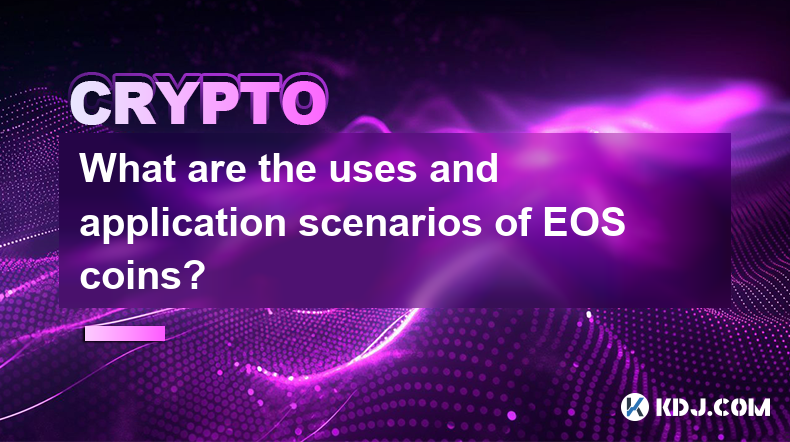
What are the uses and application scenarios of EOS coins?
Feb 26,2025 at 09:54pm
EOS: Decentralized Infrastructure for Scalable Blockchain ApplicationsKey Points:EOS enables the creation and deployment of decentralized applications with unparalleled scalability and efficiency.Its unique architecture features a high-throughput blockchain with zero transaction fees and the ability to process millions of transactions per second.EOS is ...
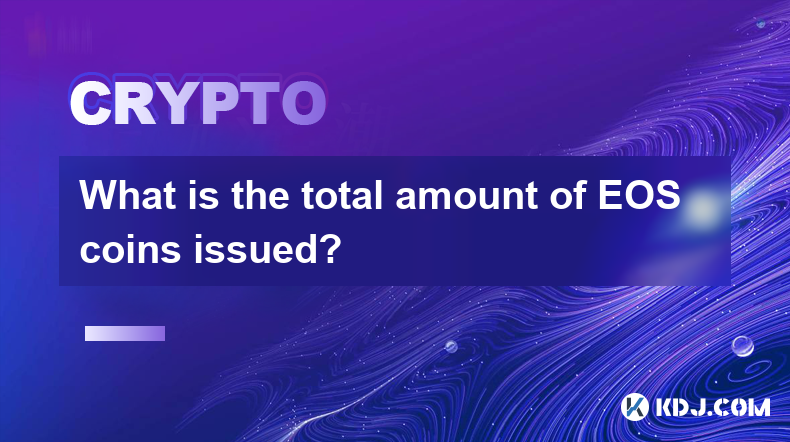
What is the total amount of EOS coins issued?
Feb 26,2025 at 06:24pm
Key PointsTotal Supply: Understand the concept of initial supply and its impact on EOS tokenomicsSupply Dynamics: Explore the various factors that affect EOS supply, including inflation and staking incentivesMarket Capitalization vs. Circulating Supply: Delve into the nuances between these metrics and their significance in token valuationDistribution an...
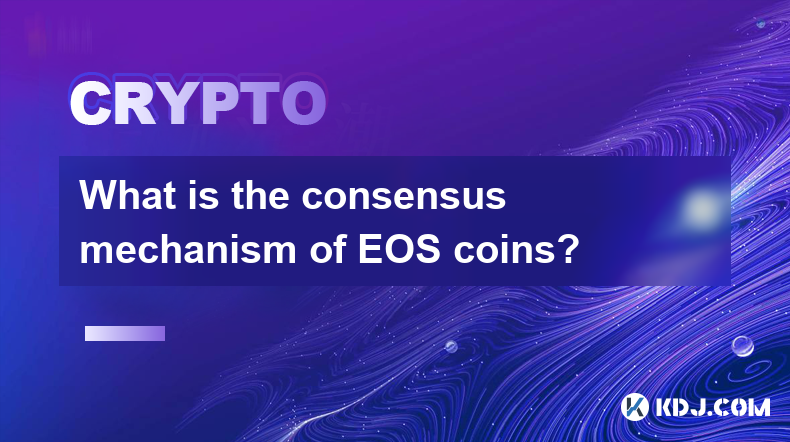
What is the consensus mechanism of EOS coins?
Feb 26,2025 at 11:19am
Key Points:EOSIO: The Foundation of EOS's Consensus MechanismDPOS: Delegated Proof-of-StakeBlock Producer ElectionsContinuous Block ProductionBlock Validation and IrreversibilityConsensus and Fork PreventionCommunity Governance and VotingWhat is the Consensus Mechanism of EOS Coins?EOS, an innovative blockchain platform, employs a unique consensus mecha...
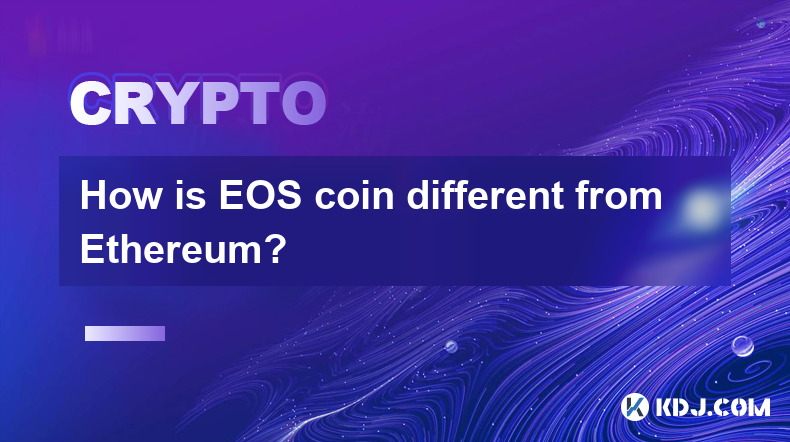
How is EOS coin different from Ethereum?
Feb 26,2025 at 10:48am
Key Points:Overview of EOS and EthereumDifferences in Consensus MechanismsAdvantages and Limitations of Each PlatformUse Cases and Target AudiencesComparison of Transaction Fees and ScalabilityCommunity Support and Development ActivityHow is EOS Coin Different from Ethereum?1. Overview of EOS and EthereumEOS and Ethereum are two of the most popular bloc...
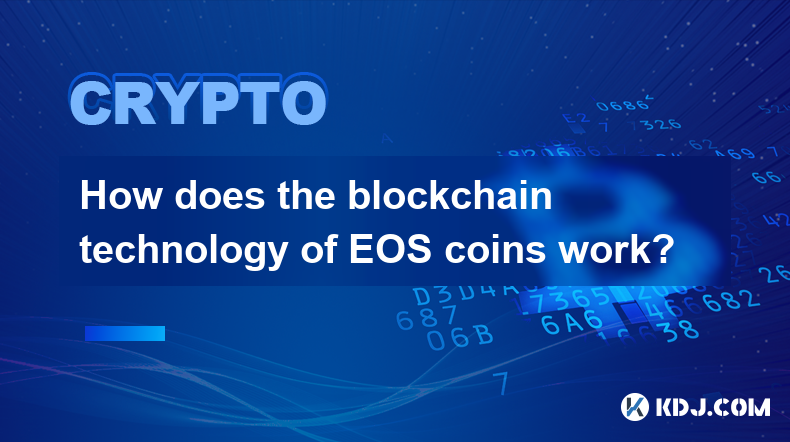
How does the blockchain technology of EOS coins work?
Feb 25,2025 at 11:13pm
Key PointsEOS is a blockchain platform that provides a high-throughput and scalable solution for decentralized applications.EOS uses a delegated proof-of-stake (DPoS) consensus mechanism to elect block producers and maintain the blockchain.EOSIO, the open-source software that powers EOS, offers a range of developer tools and features to facilitate the c...
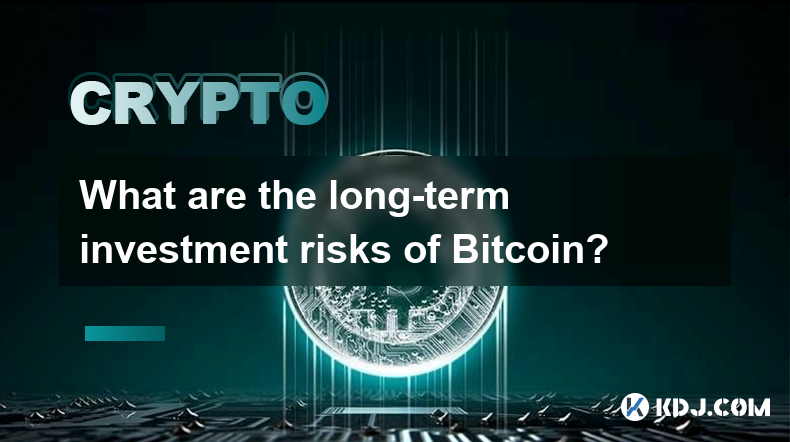
What are the long-term investment risks of Bitcoin?
Feb 22,2025 at 05:30pm
Key PointsVolatility and price fluctuationsRegulatory uncertaintySecurity risksCompetition from altcoinsMarket manipulation and scamsTransaction feesEnvironmental concernsLong-Term Investment Risks of BitcoinVolatility and Price FluctuationsBitcoin's high volatility is a double-edged sword. While it has the potential to generate substantial returns, it ...

What are the uses and application scenarios of EOS coins?
Feb 26,2025 at 09:54pm
EOS: Decentralized Infrastructure for Scalable Blockchain ApplicationsKey Points:EOS enables the creation and deployment of decentralized applications with unparalleled scalability and efficiency.Its unique architecture features a high-throughput blockchain with zero transaction fees and the ability to process millions of transactions per second.EOS is ...

What is the total amount of EOS coins issued?
Feb 26,2025 at 06:24pm
Key PointsTotal Supply: Understand the concept of initial supply and its impact on EOS tokenomicsSupply Dynamics: Explore the various factors that affect EOS supply, including inflation and staking incentivesMarket Capitalization vs. Circulating Supply: Delve into the nuances between these metrics and their significance in token valuationDistribution an...

What is the consensus mechanism of EOS coins?
Feb 26,2025 at 11:19am
Key Points:EOSIO: The Foundation of EOS's Consensus MechanismDPOS: Delegated Proof-of-StakeBlock Producer ElectionsContinuous Block ProductionBlock Validation and IrreversibilityConsensus and Fork PreventionCommunity Governance and VotingWhat is the Consensus Mechanism of EOS Coins?EOS, an innovative blockchain platform, employs a unique consensus mecha...

How is EOS coin different from Ethereum?
Feb 26,2025 at 10:48am
Key Points:Overview of EOS and EthereumDifferences in Consensus MechanismsAdvantages and Limitations of Each PlatformUse Cases and Target AudiencesComparison of Transaction Fees and ScalabilityCommunity Support and Development ActivityHow is EOS Coin Different from Ethereum?1. Overview of EOS and EthereumEOS and Ethereum are two of the most popular bloc...

How does the blockchain technology of EOS coins work?
Feb 25,2025 at 11:13pm
Key PointsEOS is a blockchain platform that provides a high-throughput and scalable solution for decentralized applications.EOS uses a delegated proof-of-stake (DPoS) consensus mechanism to elect block producers and maintain the blockchain.EOSIO, the open-source software that powers EOS, offers a range of developer tools and features to facilitate the c...

What are the long-term investment risks of Bitcoin?
Feb 22,2025 at 05:30pm
Key PointsVolatility and price fluctuationsRegulatory uncertaintySecurity risksCompetition from altcoinsMarket manipulation and scamsTransaction feesEnvironmental concernsLong-Term Investment Risks of BitcoinVolatility and Price FluctuationsBitcoin's high volatility is a double-edged sword. While it has the potential to generate substantial returns, it ...
See all articles

















































































